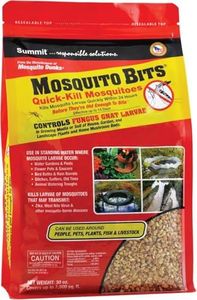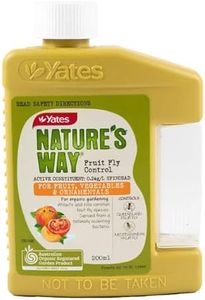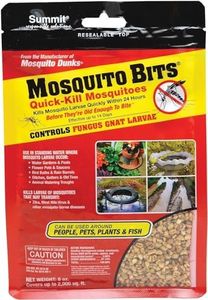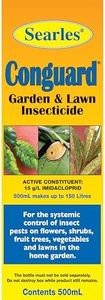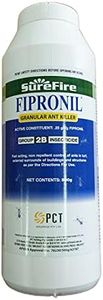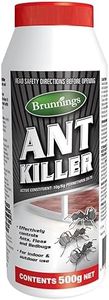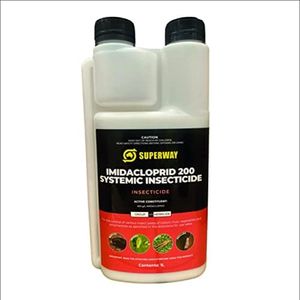We Use CookiesWe use cookies to enhance the security, performance,
functionality and for analytical and promotional activities. By continuing to browse this site you
are agreeing to our privacy policy
10 Best Insecticides
From leading brands and best sellers available on the web.By clicking on a link to a third party's website, log data is shared with that third party.
Buying Guide for the Best Insecticides
Choosing the right insecticide is important for effective pest control while keeping safety and the environment in mind. Start by identifying the type of pest you need to target and where the treatment will take place (indoors, outdoors, garden, livestock, etc.). Always read product labels carefully for proper usage and application. Keep in mind that using the wrong insecticide or incorrect application can be ineffective or even harmful.Active IngredientThe active ingredient is the chemical that actually kills or controls the pests. It’s important because different ingredients target different types of insects, and some are more suitable for certain environments than others. Active ingredients can be divided into synthetic chemicals and natural or organic options. Synthetic options often work more quickly, while natural options may be safer around people, pets, and edible plants. Choosing the right one depends on the pest you’re targeting and the level of safety needed for your family, pets, or crops.
Formulation TypeInsecticides come in several forms such as sprays, powders, granules, baits, and concentrates. Sprays are good for immediate contact and targeted application, powders are suitable for dry areas and cracks, granules for soil and garden beds, baits for attracting pests, and concentrates allow you to mix a custom strength. Your choice should depend on where the pests are found and how easy it is to reach them. For indoor use, sprays and baits are common, while granules are often used outdoors.
Target Pest SpectrumThis refers to which pests the insecticide is effective against – some are broad-spectrum (kill many insect types), while others are selective (targeting only certain species). Broad-spectrum products are helpful when you’re facing multiple pest problems at once, but they can also harm beneficial insects. Selective insecticides are better when you want to protect good bugs, like pollinators. Pick according to whether you have a specific pest problem or a more general infestation.
Residual Effect (Duration)Residual effect means how long the insecticide remains effective after being applied. Some act quickly but fade away in a few hours, while others can protect an area for weeks. A longer residual effect is good for preventing future infestations, especially in problem-prone places. A short-acting formula may be safer in homes with pets or children who could come into contact with treated areas. Consider what matches your safety concerns and the persistence of the pest problem.
Application MethodHow an insecticide is applied—by spraying, dusting, spreading, or placing bait—affects convenience, efficiency, and precision. Some areas, like cracks or soil, may demand a particular method. If you need to cover large outdoor areas, a spreadable or hose-attach formula could save time. For targeted indoor pest control, a pump spray or bait may be best. Think about the practicality and safety of applying the insecticide in your environment.
Safety ProfileThis includes toxicity to people, pets, and the environment. Safety is crucial, especially if children, pets, or edible plants are nearby. Always look for information about re-entry times, protective gear, and whether the product is approved for use around food or water. Non-toxic, organic, or reduced-risk products may be preferred in homes and gardens, while higher toxicity might only be warranted for severe infestations in less sensitive areas.
Environmental ImpactSome insecticides break down quickly and have little effect beyond their target pests, while others linger and can affect beneficial insects, water, and soil. Eco-friendlier products minimize harm to bees, pollinators, and aquatic life. Choose a product with a low environmental impact if you’re treating gardens, near water sources, or if you’re concerned about wildlife and pollinators.


